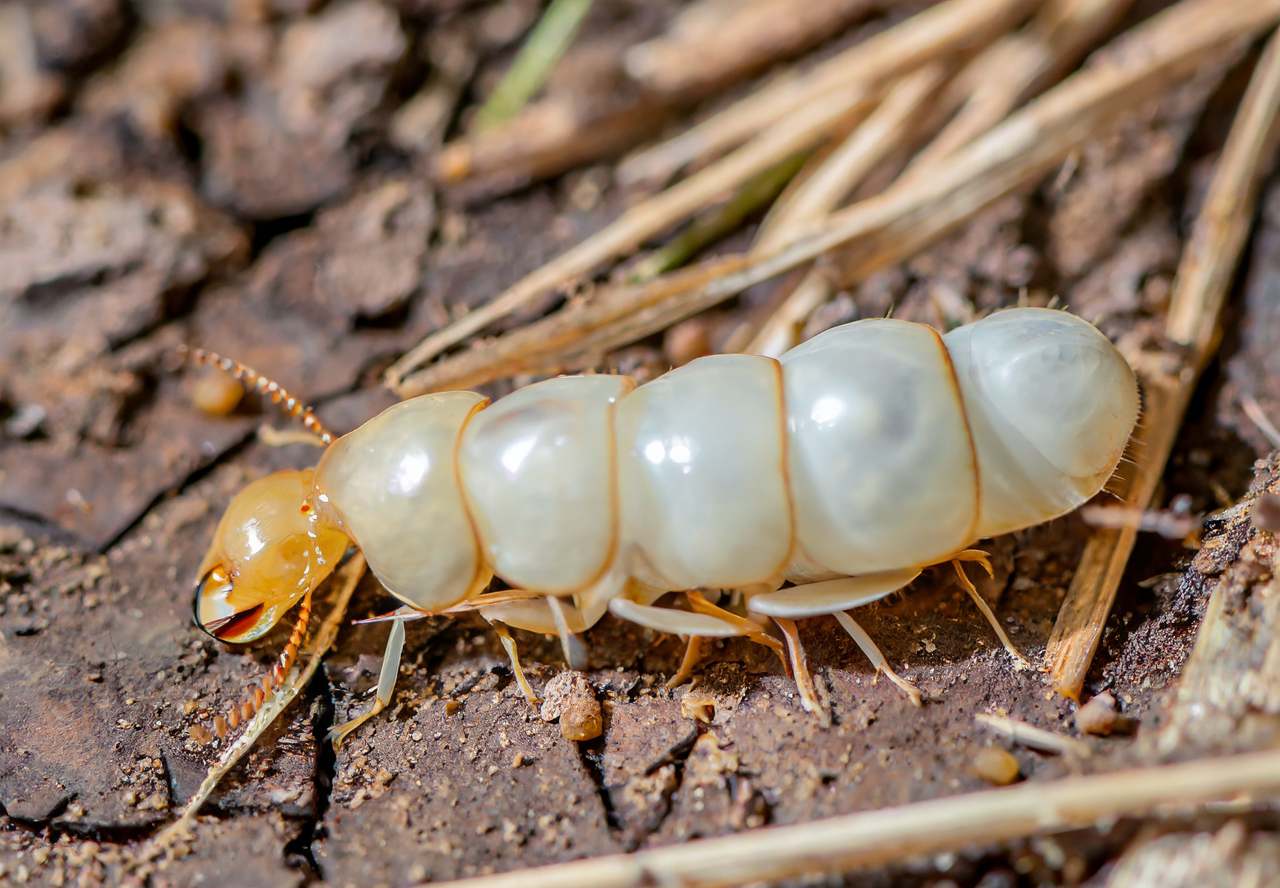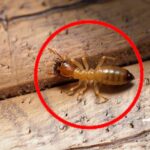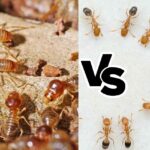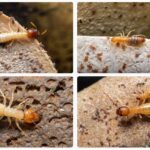Examining the intricate biology of termites necessitates a closer examination of the question, what does the termite queen look like, and how does her physical appearance shape the dynamics of the entire termite community?
Appearance of the Termite Queen
The termite queen is a large, pale-colored termite with a swollen abdomen. She may reach a length of 10 cm and is much bigger than the other termites in the colony. The reason the abdomen of the queen termite is so big is because it is full with eggs.
The head and legs of the queen termite are comparatively small in relation to her abdomen. Queen termites also have wings, but she sheds them after she starts laying eggs. The queen termite’s wings are only used for flying away from the parent colony to find a new place to start a new colony.



The queen termite is the most significant member in the colony, and she is responsible for the colony’s survival. She may live for more than 20 years, making her one of the termites with the longest lifespans in the colony.
The queen termite plays a vital role in the ecosystem. Dead wood and other organic materials are broken down by termites, which aids in the soil’s ability to replenish its nutrients. Other species like birds and mammals may also get food from termites.
The queen termite is a fascinating creature, and she is a testament to the intelligence and adaptability of termites.
Comparison of Termite Castes
| Termite Castes | Description | Role in the Colony |
|---|---|---|
| Queen | Largest member, elongated abdomen, pale or translucent | Egg laying and reproduction, primary colony founder |
| King | Similar in size to queen, dark-colored | Fertilizes the queen's eggs, helps in colony founding |
| Workers | Smaller, pale, soft-bodied | Foraging, nest building, feeding, and colony maintenance |
| Soldiers | Larger heads, strong mandibles | Protecting the colony from threats, defending the nest |
Termite Species and Queen Sizes
| Termite Species | Queen Size |
|---|---|
| Subterranean Termites | Up to 4 inches long |
| Drywood Termites | Around 1 inch long |
| Dampwood Termites | Between 1 and 1.5 inches |
FAQs about the appearance of Termite Queens
1. How can I identify a termite queen in a colony?
Termite queens have a conspicuously enlarged abdomen and are usually bigger than other termites in the colony. They stand out from the other colony members due to their size and appearance, and they are often transparent or light in color.
2. Do all termite queens have a similar appearance?
Even while termite queens often have similar features like a big abdomen and light coloring, various termite species might have quite diverse appearances. Certain species may have physical characteristics that set their queens apart from those of other species.
3. Are termite queens always visible within the colony?
Usually located deep inside the nest, away from prying eyes and shielded by worker termites, are termite queens. They may not always be readily apparent to individuals examining the colony since their main function is to lay eggs and maintain the colony’s existence.
4. How large can a termite queen grow compared to other termites in the colony?
Termite queens are much bigger than ordinary termites in the colony, reaching lengths of several inches. They are larger and more recognizable than worker and soldier termites because to their expanded abdomen, which is intended to contain a huge number of eggs.
5. Can termite queens change their appearance during their lifespan?
Although termite queens often don’t change physically during their life cycle, certain species could show signs of transformation, including having wings during the nuptial flying stage. They usually lose their wings and stay in the colony for the length of their lives after they have established a new one.
6. Do termite queens have any distinct markings or features to differentiate them from other termites?
Despite the lack of identifying exterior markings, termite queens may be distinguished from other members of the colony by their much bigger size and enlarged abdomen.
7. Are termite queens always found in the central part of the colony?
Yes, termite queens are usually found in the center chambers of the nest, where the worker termites tend to and defend them. Their isolated position gives them the solitude they need to concentrate on their main functions, which are egg laying and reproduction.
8. How do termite queens compare in appearance to termite kings?
Although termite kings and queens are about the same size, they might differ in several physical aspects, like as darker coloring. The termite king’s primary function is to fertilize the queen’s eggs and aid in the establishment of new colonies, but the termite queen’s abdomen is expanded to facilitate egg-laying.
9. Can termite queens be easily mistaken for other members of the colony, such as workers or soldiers?
Termite queens are easily distinguished from other termite castes by their unique size and appearance. Nevertheless, in some instances, inexperienced viewers could mistake them for huge worker termites. Their morphological traits, especially their expanded abdomen and noticeably greater size, may be closely examined to help distinguish them from other termites.
10. How do termite queens contribute to the survival and growth of the colony beyond their physical appearance?
Termite queens play a crucial role in the colony’s survival by laying eggs, ensuring the continuous growth of the termite population, and maintaining the social structure within the colony. The termite colony’s survival and growth depend on its capacity for reproduction.
Conclusion
In conclusion, termite queens’ appearance and function are essential to understanding termite colony dynamics. Termite queens are bigger, pale or transparent, and have a swollen abdomen for prolific egg-laying. Despite being hidden in the nest, their importance in reproduction and colony survival cannot be emphasized. The complicated and organized nature of termite queens and their critical duties demonstrate their vital role in termite colony survival and expansion.
- How do termite mounds help regulate temperature? - 7 January 2024
- 10 Effective Termite Control Methods That Actually Work - 4 January 2024
- How Long Does It Take for a Termite Mound to Form? - 21 December 2023




